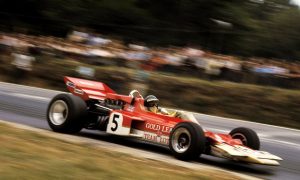
Former F1 driver Stefan Johansson believes part of F1's focus should be on improving its tyres, as better grip with less downforce is a good recipe for better racing.
Formula 1's managers are hard at work defining the sport's 2021 regulation platform. Beyond the much debated power unit format, aerodynamics are also an area to which Ross Brawn and his team of experts are devoting time and resources.
Johansson, a man with valued knowledge and common sense when it comes to F1, believes tyres offer a better and less costly means of improving racing than complicated and onerous aerodynamics.
"There’s no way to escape the effects of aero unfortunately," the Swede said in his season review, published on his website.
"Now they are talking about generating downforce from underneath the cars rather than from the top. That might help limit the turbulence a little bit but it won’t eliminate it. If you follow another car there will still be dirty air.
"As long as you have a lot of aero, you’re always going to have this problem, and the more complicated the aero is, which an F1 car is the epitomy of, the more affected your car will be from the dirty air.
"So unless they simplify the front wing considerably, I am certain they will still have the same problem.
"I’ve said it before but I’ll say it again, I know I’m starting to sound like a broken record. The easiest way to get more grip – and it would be so easy – is to simply improve the tyres.
"Even on a much lower level than F1, like when we used to run LMP2 in sports car racing, you could easily spend a million dollars developing the aero of the car to gain, maybe half a second.
"Then you bolt on a different set of tyres that cost maybe $2,000 and you pick up a second-and-a-half."
"It’s beyond me that improving the tyres is never even mentioned in F1," adds Johansson.

©WRI2
"There are three things that make a race car go faster or slower not counting the driver of course: Chassis, Engine and Tyres.
"The first two are open for anyone who wants to compete, yet the tyes are restricted to one manufacturer, to whomever is willing to bid for the exclusivity.
"As it is today, I don’t think many tyre companies would be interested in competing against each other in F1 with the current rules that mandate the same old 13-inch balloon tyres they’ve continued to use since the 70’s or maybe even earlier, because they are completely irrelevant to any tyre on the road anymore.
"But if they could change to tyes that look at least remotely like what you see on a road car now then I’m sure the tyre companies would jump right in. Michelin have already made that statement."
The Ferrari and McLaren driver therefore suggests opening up F1's tyre market, but only if downforce is reined in.
"I’m sure that if you took away 60 or even 70 percent of the aerodynamic grip the cars have now and opened up the regulations to allow different tyre manufacturers to compete against each other, you would easily gain back 3-4 seconds per lap, maybe more – almost immediately.
"Then give the cars an extra 300 horsepower and you gain another 3-4 seconds on an average length track."
Gallery: The beautiful wives and girlfriends of F1 drivers
Keep up to date with all the F1 news via Facebook and Twitter






